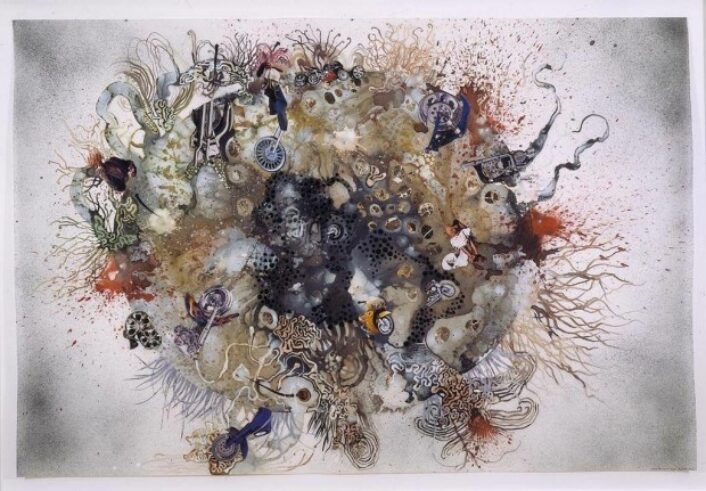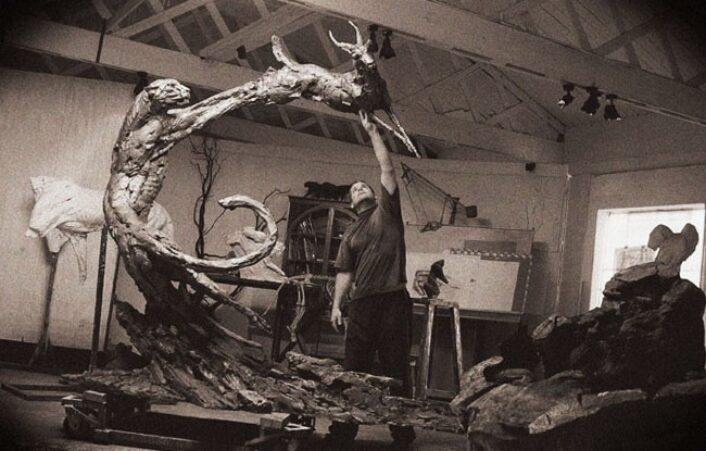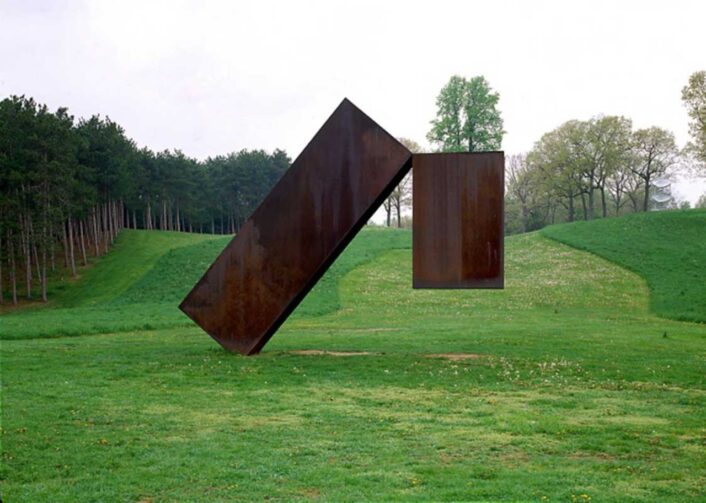Fine Art
Wangechi Mutu’s magical creatures
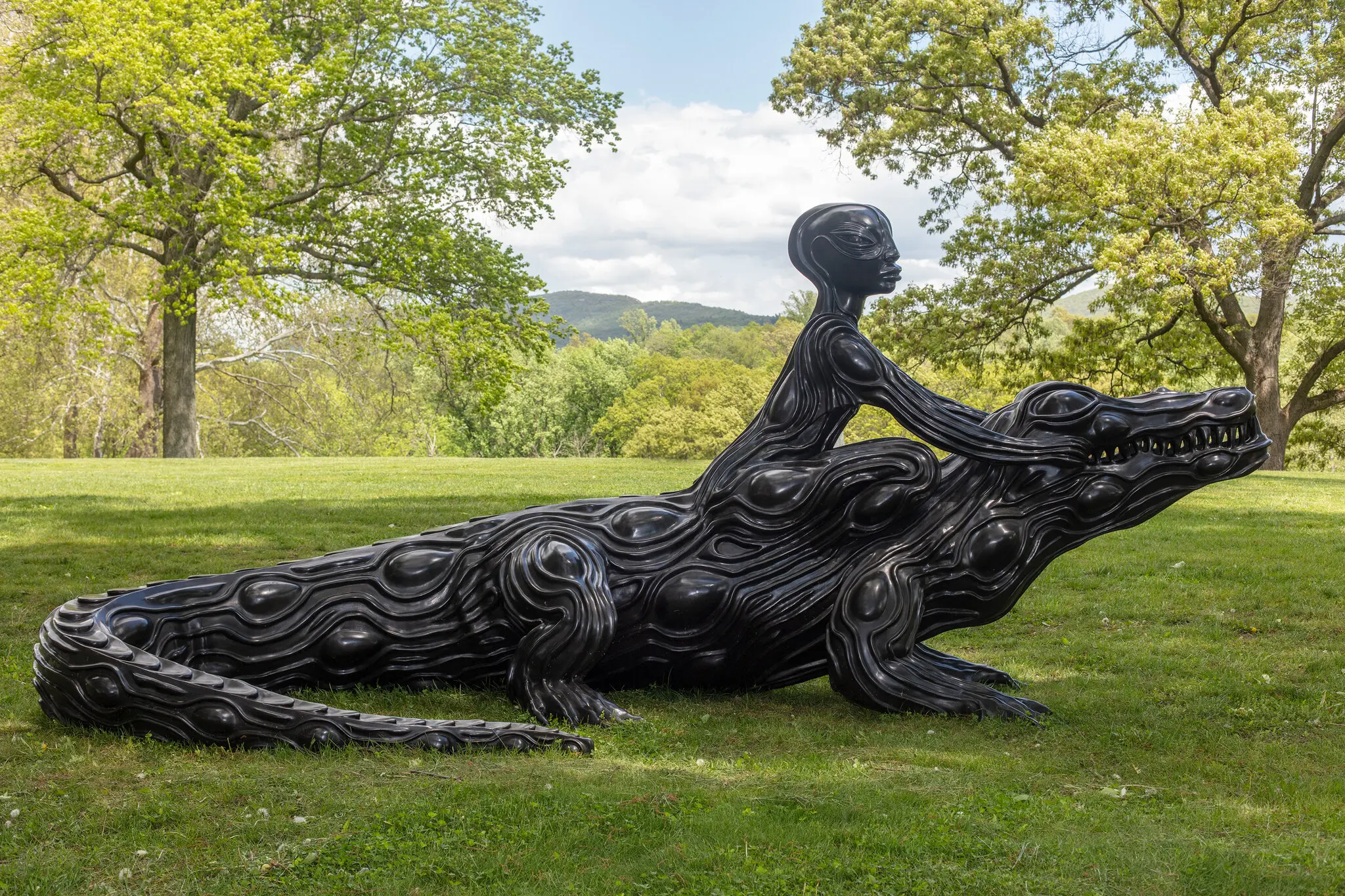
“Crocodylus,” 2020. The bronze piece takes the form of a woman “riding” a crocodile. It appears as those the two distinct figures are one as the crocodile’s patterned black finish extends to the female rider.
Image courtesy of: The New York Times, photographed by: D’Angelo Lovell Williams
Wangechi Mutu is a Nairobi-born multi-disciplinary artist that is most recognized for her large-scale clay and bronze sculptures. The Kenyan artist is also well known for her provocative collages that often feature female figures that are part human, and part something else: animal, plant, or machine. Now living full-time in Brooklyn, Mutu’s work is unique in that, no matter the medium, she transcends (courtesy of Double Blind Magazine), “boundaries, reconnecting with the natural world, and reimagining a more humane co-existence.”
Over the summer, Mutu was the subject of a show at Storm King Art Center. It is a sort of full-circle for the artist as the open-air museum was a “refuge” for Mutu while she was a student at Cooper Union and later at Yale University. She told The New York Times, “It calls people back and back again, like a plan of pilgrimage.”
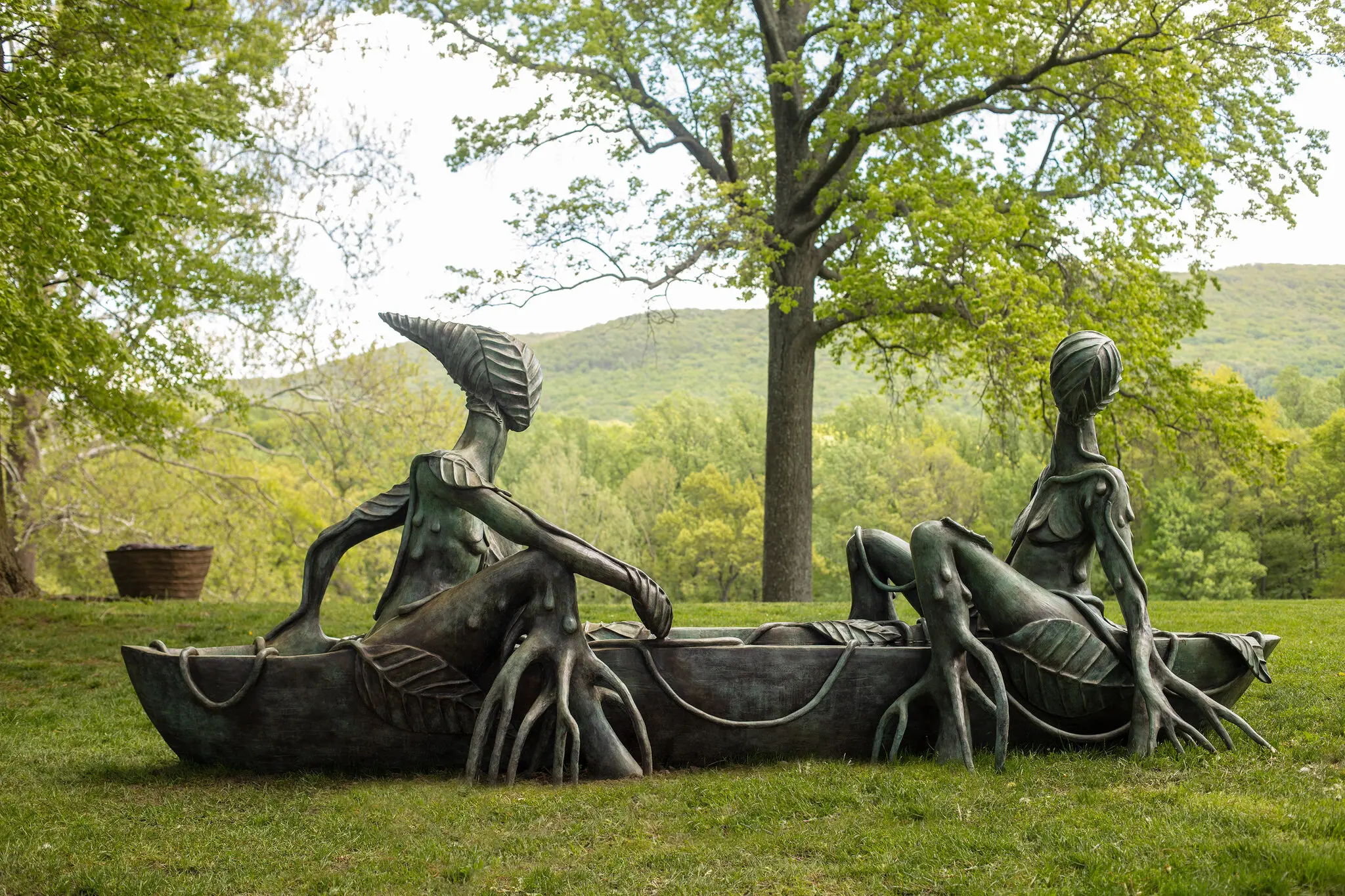
“In Two Canoe,” 2022 is a 15-foot-long sculpture that was inspired by mangrove trees. The subject’s heads are consumed by conical leaf masks with vines circling their bodies. The figures seem to be rowing their vessel towards nowhere.
Image courtesy of: The New York Times, photographed by: D’Angelo Lovell Williams
Mutu calls art her a way of communicating with others. She likens creating art to a “form of meditation and prayer, a way to integrate her empathy into the earth and ‘pass that love, sorrow, pain, and urgency on to other people.” There is a sense of mysticism that Mutu’s work evokes; perhaps it is the way sculptures interact with the world in which we reside. Specifically for Mutu, it is clear that she uses her intense sculptures to showcase her ideas of how historical violence has impacted women. In Storm King Art Center’s wording, “The artist molds her ideas and materials to assert the existence and cultural relevance of ancient original myths, fables, and histories.”
For almost twenty years, Mutu has been exploring the idea of “in-betweenness.” The artist reflects upon her American experiences as a way to intermix African imagery into her work. Americans lack of knowledge regarding African culture served as a wonderful starting point. As such, her images are sometimes tough to look at; often evoking strong emotions.
A walk through Storm King Art Center's magic
The exhibition at the open-air museum is both indoors and outside. Situated in a magical fashion, eight large-scale cast bronze works are scattered throughout the landscape. Installed around the fields, woods, and ponds, the sculptures take on added meaning by interacting with the landscape and history around them. For Mutu, the outdoor background… the landscape… provides a “fertile backdrop for selecting, myth making, and setting the scene in which women become powerful and autonomous protagonists and global indignity is centered.”
Mutu’s work has long pulled at the threads of representation, creating powerful, evocative transpositions of the body, and bringing up equally powerful critiques of the modes of depiction, the materials used, and the media environment in which images circulate. Deeply rooted in art history, Mutu excavates the modes of representation throughout recorded time to arrive at new forms of womanhood with an eye towards an undiscovered future. Even with the mystery that surrounds them, Mutu’s pieces exude grace.
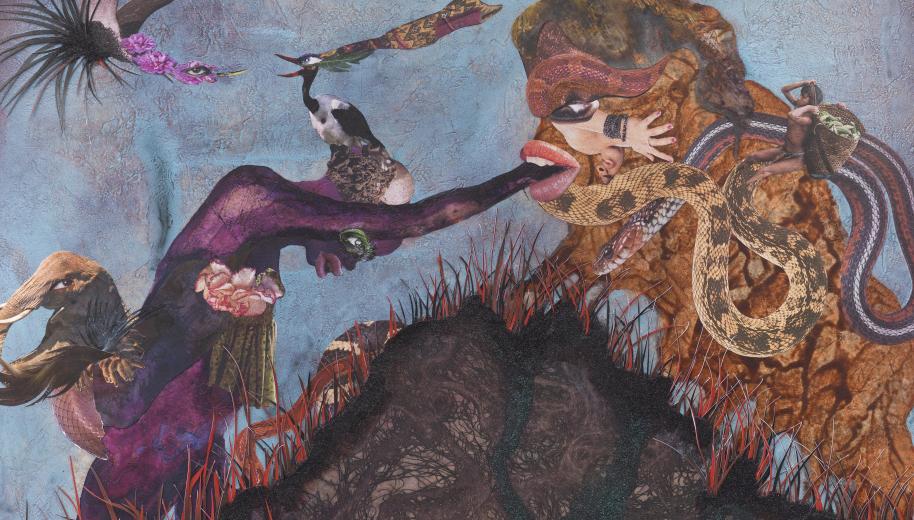
“Mountain of Prayer”
Image courtesy of: Culture Whisperer
Mutu’s collages are produced through a system of layering. Initially, Mutu referenced her experiences at an all-girls’ Catholic school in Nairobi and some of Africa’s violence during both its colonial and post-colonial times. For example, Mutu’s figures without arms draw upon the victims of Sierra Leone’s war crimes and the horrors inflicted in the Congo by the Belgians.
Over time, Mutu began using pornographic magazines, 200-year-old medical illustrations, and ethnographic photography in her work. However she claims that she is neither a photojournalist nor a documentarian; rather, “an irresponsible anthropologist and irrational scientist.”
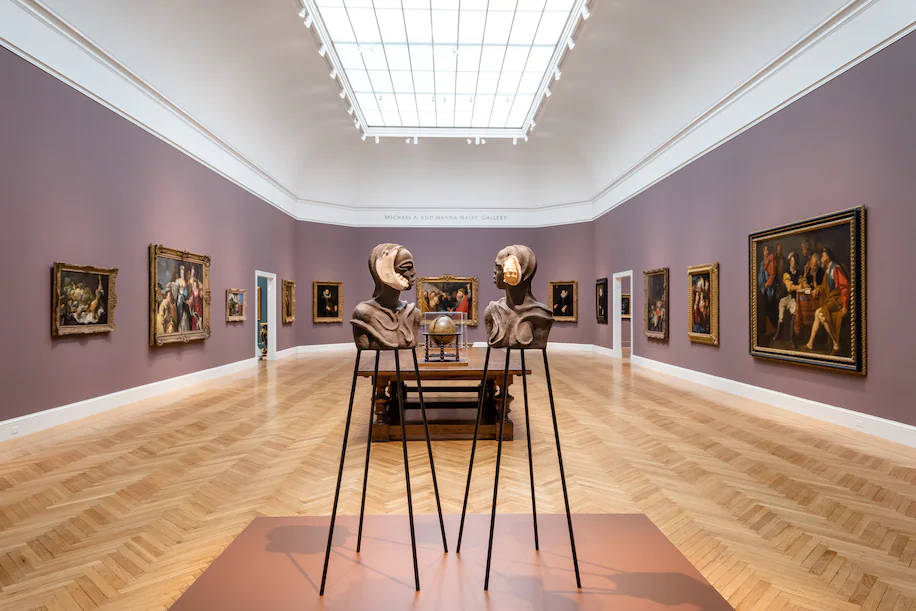
From the Legion of Honor, the “I Am Speaking. Can You Hear Me?” exhibition.
Image courtesy of: The Washington Post, photographed by: Gary Sexton
Each of Mutu’s images deals with a body being controlled. For Mutu, the way of remaining flexible has been to invent her own style: a brand of sensuality, sophistication, and exoticism. It is not surprising that many of the world’s top museums have flocked to purchase and display Mutu’s works.
Mutu says (courtesy of Medium), “I’m trying to just push up the volume on how incredibly important every plant and animal and human is in keeping us all alive and afloat.”
